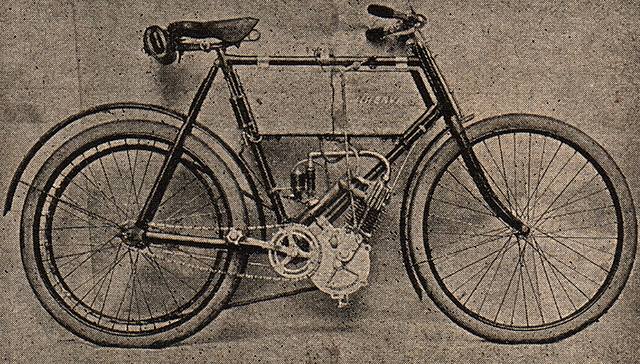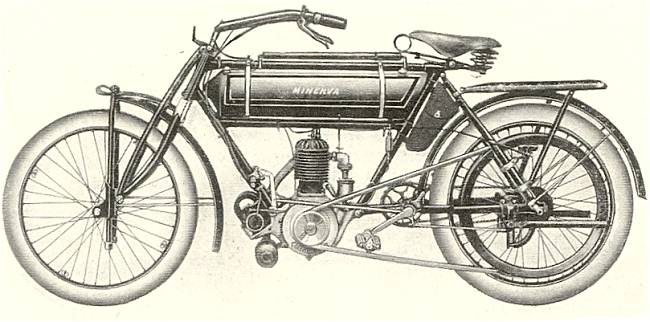














| With this site, I do not claim to be always
complete and correct. Therefore, your comments are
more than welcome. |
|
Introduction The most famous Belgian cars were without doubt the Minervas. These cars could compete with Rolls-Royce, Isotta-Fraschini, Hispano-Suiza and other illustrious makes. Stars, Kings and Maharajahs were clients. Most of these cars were equipped with the silent sleeve valve engines. In the late 1920's the Belgian market was inundated with cheap American cars assembled in Belgium. Minerva tried to counter with the construction of a modest car, but in vain. In September 1934, the works were declared bankrupt. From then on and untill the war, only trucks were made by the new Belgian owner: Imperia. After the war the construction of a light truck and the assembly of the Minerva - Land Rover, under licence, tried to restart an industrial programme. A little later, in 1958, after an attempt with the production of scooters under licence of MV (Meccanica Verghera), the name Minerva disappeared into history. But it all started with the
"safety bicycle" in October 1897. Mr Sylvain de Jong, born in Amsterdam on 5 January 1868, moved at the age of 13 with his parents and two brothers to Brussels. After working for some years as a journalist, he went to the U.K. to study the safety bicycle production. In 1895, S. de Jong, his brothers and other investors started a factory in Antwerp, to produce and repair bicycles. For these bicycles, they selected the name "Mercury". Only two years later, after a dispute with the other investors, S. de Jong created on 15 October 1897; "S. de Jong & Cie". This time he selected the name "Minerva" for the new plant in Antwerp. Minerva the Roman goddess, daughter of Jupiter, sprang from the head of her father, fully grown and in full armour. She was the patron of warriors, goddess of knowledge and wisdom and goddess of artisans and industry. Sylvain de Jong anticipated
on a slackening bicycle market and announced in
February 1899, the production of light cars
(voiturettes) and motorcycles. In 1900, S. de Jong & Co. bought an engine from the Neuchâtel - Swiss based Zürcher & Lüthi. Zürcher & Lüthi did not only build the engines, they also patented the bicycle set-up. The engines were "clamped to the framing" (clip-on). A leather "band" over a grooved rim, bolted to the back wheel, guaranteed motion. The engines had an atmospheric inlet valve and a mechanical exhaust valve. A surface carburettor delivered the correct mixture from the "spirits reservoir" and a 4 volt accumulator with trembler coil produced the spark. Jan Olieslagers, a young mechanic at the Minerva works, had the honour of starting the first Z & L engine mounted on a Minerva bicycle frame. Later Jan Olieslagers became the factory pilot and would be known as the "devil from Antwerp". With the other Minerva pilots, Flamand and Kuhling, he would win many races in Belgium and abroad. S. de Jong & Co. bought the licence and started the production of all parts needed to turn a Minerva bicyclette into a Minerva motocyclette. Due to the reliability of the clip-on engine, success was immediate. The first Minervas were
supplied with a:
3/4 hp (56 x 70) 172 cc.
1901 By December 1900, bicycle manufacturer Burrow-Strutt had equipped two of their bicycles with the engine. Also in the U.K., Bayliss Thomas (Excelsior) claimed the honour of being the first to exhibit a complete machine. Later followed: By the end of 1901 the engine had a larger bore, was equipped with larger valves, had a heavier flywheel and a higher compression ratio. The 211 cc engine developed now 1 1/2 hp. The engine was running at 1500 rpm for a speed of about 30 km/h. The maximum speed was about 50 km/h. The petrol consumption was in the order of 3 litres per 100 km and you had to change oil every 25 to 30 km when new and every 50 km when "every part is well worked in". The 4 volt accumulator had to be recharged preferably before the voltage attained 3,75 volts. This had to be done at 3 to 4 amperes during 6 hours. The 1901 production
consisted of: The production program for
1902 comprised: All engines were "clamped to the framing" (clip-on) and equipped with the surface carburettor (see Mechanics). Only the 1 1/2 hp could be equipped with a spray carburettor. The Phénix carburettor was optional and of the "Panhard et Levassor" type.
1902, 1 1/2 hp equipped with Phénix carburettor.
1903 At the end of 1902, Minerva presented in London the new program for 1903. A new engine of 239 cc (66 x 70) produced 2 hp thanks to the two mechanically operated valves. Minerva was one of the first to build engines with both valves mechanically operated. Due to the better filling of the gasses and hence the lower engine temperatures, the cooling ribs at the base of the cylinder were deleted. A second new feature for all Minerva models, was the spray carburettor. The motorcycles could be ordered with the Phénix carburettor or the usual surface carburettor. The production program for
1903 comprised: Both the 2 hp and the 2 1/2 hp models were still bolted to the front down pipe of the frame (clip-on). The inclined position of the engine on the front down pipe combined with the increasing power was the cause of many frame ruptures. The engine of the Romania was mounted vertically in the frame, most probably in an attempt to overcome the above problem and in imitation of another successful machine: the Werner motocyclette. The Werner brothers were two Russian emigrées settled in Paris and patented already in 1901 for what was to prove the logical engine position: built into the bottom bracket location of a pedal bicycle frame. Like the Romania set-up, other constructors worked their way around the patent with some different variations.
By 1904 all models had both valves mechanically operated, were equipped with Longuemare patented carburettors and had the frame strengthened with an extra pipe under the smaller "spirits reservoir". The surface carburettor was still available for all models. The English catalogue for
1904 showed the Minervas with three engine
types: These "could be had in six standard varieties". Each engine could be delivered "clamped to the frame" (clip-on) or "in the vertical position" (single in frame).
The 1904, 2 3/4 hp.
A V-twin was developed for racing. The bike produced 7 hp. Jan Olieslagers participated, with this motorcycle, in the first world championship for motocyclettes, organized in Paris - Parc des Princes. He rode the 49 kg bike at a maximum speed of just over 100 km/h and ended first in the qualifying series. In the finals, a broken crankshaft ended the race for Minerva. See the "Racing" page.
 Cottereau - Minerva. Courtesy Pierre Marvier. 1905 Minerva introduced the V-twin for sale to the public. Also, from this year on, all motorcycles were available with a number of options and only as single in frame. The clip-on had been deleted from the production program. 1st option: 2nd option: 3rd option: The catalogue for 1905
showed:
1906 The production program for
1906 comprised: From the 3 options presented in 1905, the two speed gear disappeared from the catalogue. Compare the 1905 - 2 hp with the 1906 - 2 hp. The catalogues show different bores for the same model. As from 1907, the bores for the 2 hp model will remain consistent.
1907 - 254 cc single (68 x 70) 2
hp.
1908 The English catalogue for
1908, showed four models: Minerva had abandoned the square shaped petrol reservoirs for the cylindrical (torpedo ended) tanks and changed the Minerva-Longuemare carburettors for the G. & A. carburettor with automatic air adjustment. In addition to above models, the Dutch catalogues show still the 2 hp models.
1909 The Dutch catalogue for
that year still comprised: The English catalogue showed the same, except for the 2 hp. In the Netherlands, one could still choose between the magneto or battery and coil ignition.  1909, V-twin with the new introduced Bosch Ignition for the U.K. or the usual Eisemann for The Netherlands.
1953 Under licence of the Italian MV, Minerva produced a scooter. During two or three years these scooters had some success, but not the capacity to restart a serious industrial program. The production of the scooter was stopped and shortly after (1958), all activities ceased.
150 cc,
two stroke engine - 9.5 hp |








 MINERVA MOTORCYCLE PRODUCTION
THROUGH THE YEARS
MINERVA MOTORCYCLE PRODUCTION
THROUGH THE YEARS